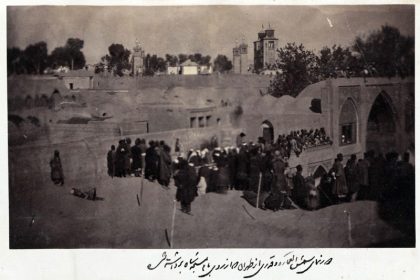One of Hitler’s most dreaded shelters in World War II has become a lush hotel in the heart of Hamburg, Germany.
The “St. Pauli” building, which had long been the most bitter days of German history in public minds, has now become a place for the recreation of citizens and tourists. Since five years ago, the creators of this giant structure never thought it could one day be in the plan of demolition and explosion, it was finally established by greatness and power. The St. Pauli Tower is one of the few remnants of the Hitler era, which has been welcomed by German citizens, artists and investors in its reconstruction and restoration program.
Get to know St. Pauli’s strange shelter and hotel:
About St. Pauli
The giant concrete skyscraper has skyrocketed in the heart of St. Pauli, the state of Hamburg in Germany. The building, at a height of 2 meters, has been the focus of citizens, Europeans and the world for more than 5 years. The St. Pauli structure was formerly known as “Media Bunker” and “Bunker on Feldstrasse”; But it is now known as the Green Bunker. This structure was built during the Nazi regime of Adolf Hitler using forced labor and is the darkest and most dreaded period of German history. The Pauli Refuge is nowadays registered as a historic and protected building.
Nazi Germany’s shelter; Photo Source: Bunker-Stpauli.de site; Photographer: Unknown
St. Pauli has been surprised to repair, repair and change in recent years. Architects who have designed and implemented the current status of the residence have made it a plant -covered pyramid and cover the gray walls with the leaves of the plants so that its exterior is not reminiscent of German memories and days in World War II. Hamburg’s renovated shelter now has two restaurants, a five -storey hotel from the Hard Rock Hotels and a lush café and garden.

St. Pauli’s shelter before reconstruction; Photo Source: nypost.com; Photographer: Unknown
Hard Rock Hotels, which are related to rock music and culture, began working on the project; The project is currently called Reverb Hotel. Since the city of St. Pauli, the first professional activity of the Beatles band, is one of the most famous English rock music bands, it is remarkable and lovely for rock musicians and fans, which makes them invest in the project. In the process of rebuilding the shelter, it is also designed to hold a concert and artistic activity of the music clubs, as well as the exhibition of artworks, and the hotel has a special host for artists and music industry activists.

St. Pauli Restaurant: Photo Source: nypost.com; Photographer: Unknown
History of St. Pauli
St. Pauli was one of the two Hamburg anti -aircraft defense towers, a series of German army towers during World War II. This monument is founded by the National Socialist German Workers’ Party. This dreaded and giant structure was built by jailed Jews in the Nazi forced labor camps and took the process of construction from year 2 to year 2. At that time, this concrete fortress, in addition to taking refuge, was used to propagate and promote the Nazi regime’s racial ideologies during the war and hold meetings of the army leaders and spy organizations. The party exposed St. Pauli as a symbol of Hitler’s military power for soldiers, German citizens and allies to prevent people from burnout during the war and terrorize its Allies and opponents. According to existing historical documents, during the World War and the Hamburg aerial bombings, up to 3.5 people were refuge in the shelter.

Nazis’ residence; Photo Source: nypost.com; Photographer: Unknown
After eight decades, the secret documents of the SSS leaders’ meetings in the years of World War II were still discovered during the reconstruction process. Among these were the maps that showed the routes and doors of the Wermacht military hospital, as well as documents that confirmed the intensity and crimes of the war.
Finally, after the end of World War II, the Allied forces built the Denazification plan to eliminate members of the Nazi Party and overthrow SS. The purpose of the plan was to dissolve their organizations, the trial of leading leaders of war crimes in the Nuremberg court, to prevent the continuation of genocide, and ultimately end this global bloody crisis. In the process of clearing, many shelters exploded, but St. Paul remained in the process of its strength and endurance.

Hamburg city after air bombardment in World War II; Photo Source: Ref-Pathfinders.com; Photographer: Unknown
The St. Pauli Tower is made of walls of 1.5 m, ceilings of 1.5 meters thick and an infrastructure of 1.5 meters. This supercar weighs 2.5 tons and is unable to destroy and explode since it is built in the center of the city and is surrounded by residential areas; Because such a destructive operation destroys its adjacent homes and towers up to kilometers.
Another reason for the survival of the building was the severe shortage of housing in the early years after the war. The shelter became a temporary residence of many homeless citizens, women and children, so that the government gaining an opportunity to resolve crises and organize the war -torn country.

Shelter of St. Pauli; Photo Source: Bunker-Stpauli.de site; Photographer: Unknown
Reconstruction of St. Pauli
The Hamburg refuge was one of the eight anti -aircraft towers that Germany built after the British air strikes on Berlin. The population density in the urban context of the tower, as well as the strength and strength it had, made it impossible to destroy it. Therefore, the Hamburg Urban Development Association and the Hamburg local associations had no choice but to maintain it. They had to restore Paul’s tradition in such a way as to give the citizens a positive and relaxing sense of the Nazi dictatorship in the city center.
After the renovation, the roof of the building was designed to cover the walls of large shrubs and lush trees, and its facade from a gray building with bitter memories, to a green building for the joy and leisure of citizens and tourists in Hamburg. Turn. The streets around the hotel have also become modern and luxurious areas of Hamburg in the urban development plan.

St. Pauli’s shelter over time; Source of Photos: Bunker-Stpauli.de; Photographer: Unknown
At the beginning of the reconstruction plan, the shelter first identified a dedicated place to commemorate the victims of the Nazi regime and set up a permanent exhibition of prisoners of forced labor camps. This welcomed the citizens of this urban development and the restoration of the monument, and many people have cooperated and involved in constructing it. Currently, the first floor of the structure narrates a complete history of individuals, memories, events and events related to the St. Pauli and Hamburg refuge in World War II.
The presenters of the memorial fair, stories of those who lived in the shelter during the war, collected documents about the hundreds of forced labor workers involved in the construction, etc., thus the Pauli Tower as a historical work with a historical work. The new application has become part of Hamburg’s current culture and a reflection of World War II history.

Nazi Germany’s shelter; Photo Source: Bunker-Stpauli.de site; Photographer: Unknown
St. Pauli Hotel facilities
The five floors belong to the Rorb Hotel. This unique guest consists of 4 rooms (in year 2), the price of each night in the classic rooms is € 5 and every night in modern rooms is € 5. In the classic rooms there are a very strong speaker, a 2 -inch TV, a double bed and other hotel facilities and services. Modern rooms are also a little more equipped, and the main difference is that their window is open to a great view of the beautiful city of Hamburg. One of the interesting services of the St. Pauli Tower Hotel complex is automatic acceptance of guests, smart technology in the rooms and interior materials, as well as shared work space.
 Saint Pauli Hotel Rooms; Photo Source: theguardian.com; Photographer: Unknown
Saint Pauli Hotel Rooms; Photo Source: theguardian.com; Photographer: Unknown
On the ground floor of the hotel, there is also a large branch of Rock Shop for fans and lovers of hard rock brand products and products. The first three floors of the hotel are owned by Karo & Paul Restaurant, which is opened in April and managed by the famous chef of television, restaurant and German entrepreneur, Frank Rosin. Also on the fifth floor there is a Spanish restaurant La Sala, with all kinds of international and Spanish cuisine served. Citizens and people who are not guests are also available for the use of cafes, restaurants, shared work spaces, shops and other services offered outside the hotel’s rooms. Also, the highest point of the tower, adorned with a lush garden and a beautiful café, is free to the general public, and people can walk there and watch the beautiful city of Hamburg from the height of St. Paul’s shelter.

Hotel St. Pauli; Photo Source: nypost.com; Photographer: Unknown
What do you think about this initiative? Did you prefer this monument to disappear from the page of the day or to remain as a memorial to the dead? Please share your views with us and other users.
Cover Photo: St. Pauli’s shelter in Hamburg, Germany; Photo Source: Theguardian.com; Photographer: Unknown
Frequently asked questions
What is the St. Pauli refuge?
St. Paul’s shelter is located in the heart of St. Pauli Hamburg and the concrete skyscraper is 2 meters high. This structure is known as an urban landscape and a reminder of the Nazi regime. The St. Pauli refuge has now been registered as a protected monument and has changed to the hotel.
When was St. Pauli’s shelter built?
The St. Pauli refuge was one of the German Army towers during World War II, which was built by Jews in prison camps by Jews in Nazis for forced labor camps by the order of the National Workers’ Socialism Party.
RCO NEWS















